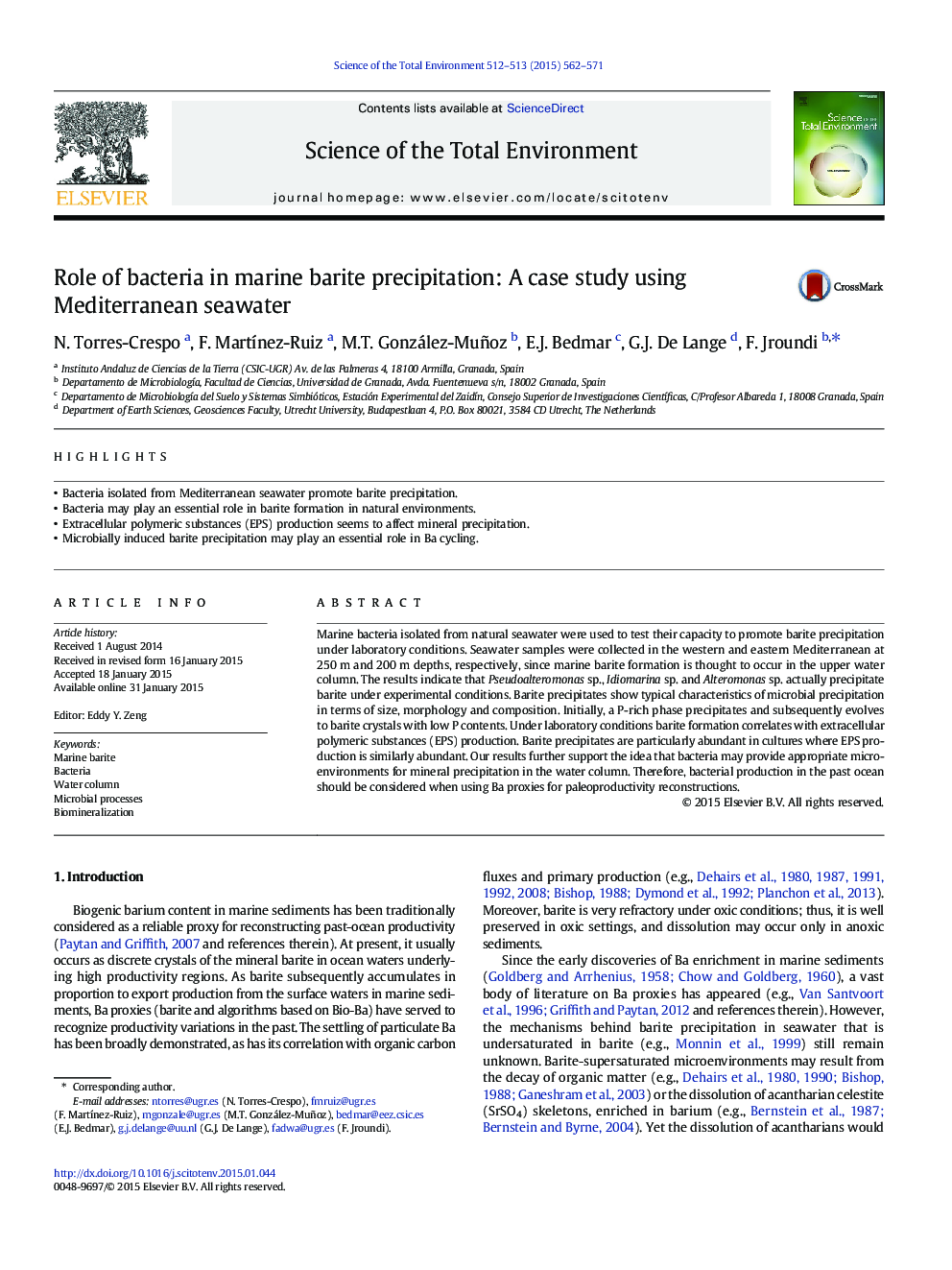| Article ID | Journal | Published Year | Pages | File Type |
|---|---|---|---|---|
| 6327287 | Science of The Total Environment | 2015 | 10 Pages |
Abstract
Marine bacteria isolated from natural seawater were used to test their capacity to promote barite precipitation under laboratory conditions. Seawater samples were collected in the western and eastern Mediterranean at 250Â m and 200Â m depths, respectively, since marine barite formation is thought to occur in the upper water column. The results indicate that Pseudoalteromonas sp., Idiomarina sp. and Alteromonas sp. actually precipitate barite under experimental conditions. Barite precipitates show typical characteristics of microbial precipitation in terms of size, morphology and composition. Initially, a P-rich phase precipitates and subsequently evolves to barite crystals with low P contents. Under laboratory conditions barite formation correlates with extracellular polymeric substances (EPS) production. Barite precipitates are particularly abundant in cultures where EPS production is similarly abundant. Our results further support the idea that bacteria may provide appropriate microenvironments for mineral precipitation in the water column. Therefore, bacterial production in the past ocean should be considered when using Ba proxies for paleoproductivity reconstructions.
Related Topics
Life Sciences
Environmental Science
Environmental Chemistry
Authors
N. Torres-Crespo, F. MartÃnez-Ruiz, M.T. González-Muñoz, E.J. Bedmar, G.J. De Lange, F. Jroundi,
